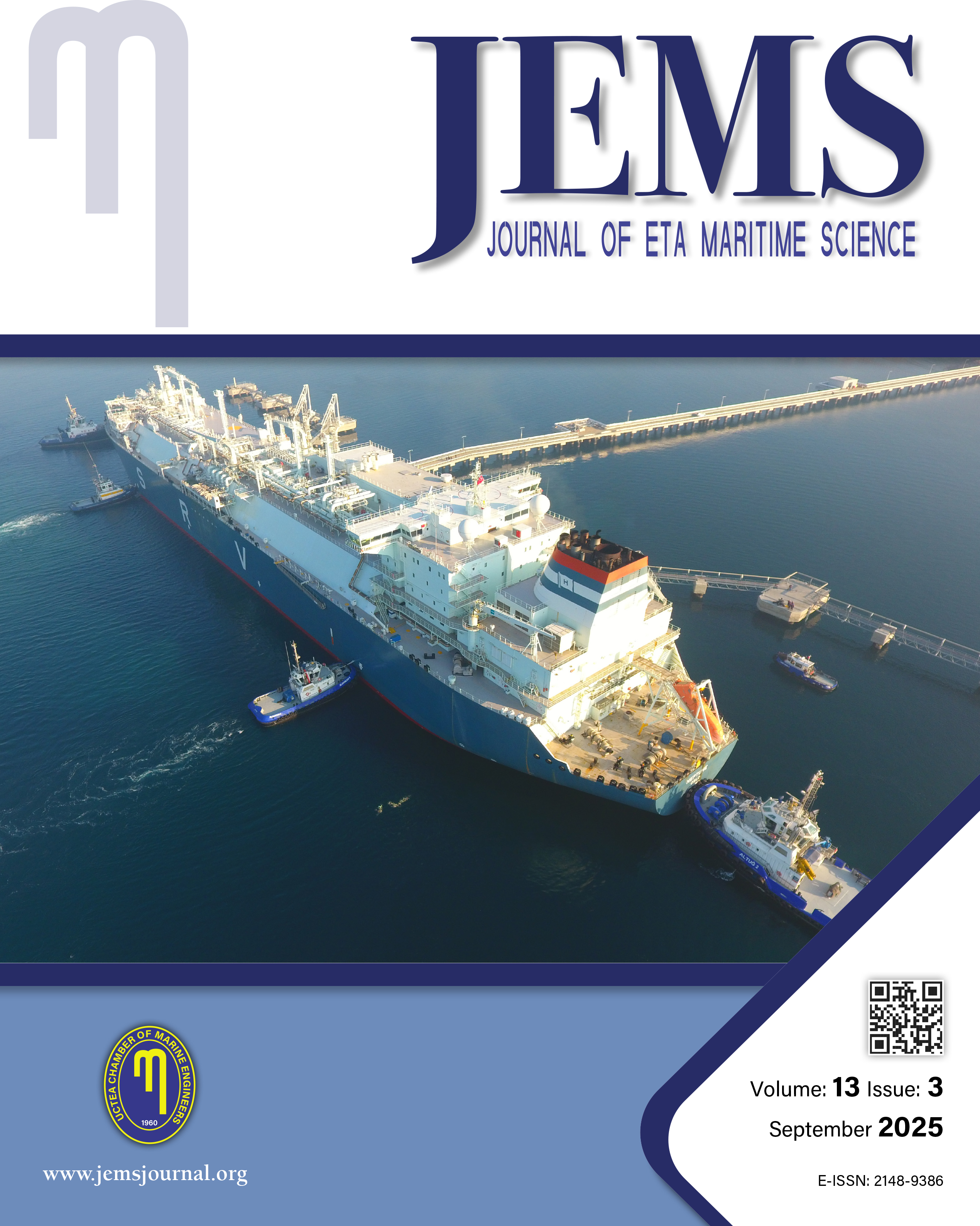

JEMS apply the Creative Commons Attribution NonCommercial 4.0 International Licence to all manuscripts to be published
Volatility Transmission Between Container and Dry Bulk Freight Markets During the COVID-19 Pandemic
Reha Memişoğlu1, Seçil Sigalı21Dokuz Eylül University Faculty of Maritime, Department of Maritime Business Administration, İzmir, Türkiye2Dokuz Eylül University Faculty of Maritime, Department of Logistics Management, İzmir, Türkiye
Shipping is a highly volatile, cyclical, and capital-intensive industry defined by extreme highs and lows. This makes information regarding volatility in this market material and relevant for decisions related to portfolio diversification, forecasting, and hedging in the maritime industry. Understanding how volatility is disseminated across the shipping market can help shipping companies to improve operational efficiency by making them more responsive to market changes. When shipping companies can anticipate market changes, they can swiftly respond and adjust their operations accordingly. In addition, volatility transmission in the shipping industry is crucial for policymakers seeking to improve the economic outlook of individuals and business entities that depend on the shipping industry. By monitoring the flow of volatility between shipping markets, they can promote effective pro-industry economic policies by more accurately estimating the effects of introducing new shocks to one freight market on another one. Therefore, understanding the volatility transmission between the container and dry bulk freight markets could provide an effective risk management mechanism that improves decision- making in shipping. This study analyzes volatility transmission between the container and dry bulk freight markets during the coronavirus disease-2019 pandemic using an asymmetric BEKK-GARCH(1,1) model that can also serve as a weak efficiency test. The results indicate that there was bidirectional volatility transmission between the container and dry bulk freight markets during the pandemic and that transmission from the container to dry bulk freight market was dominant. These findings support the price formation hypothesis of shipping, which states that dry bulk freight rates will follow container freight rates when freight rates exhibit an upward trend. Furthermore, the statistical significance of volatility transmission suggests that container and dry bulk freight rates can be used as a prediction mechanism for each other, serving as a market inefficiency indicator for both freight markets.
Keywords: Volatility transmission, Market efficiency, Freight markets, COVID-19, Lead-lag relationshipManuscript Language: English
(1856 downloaded)










